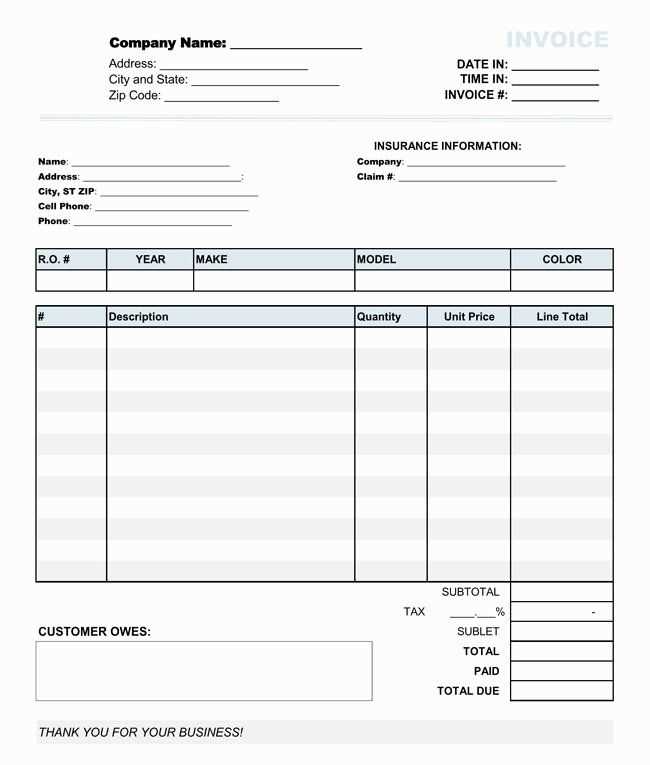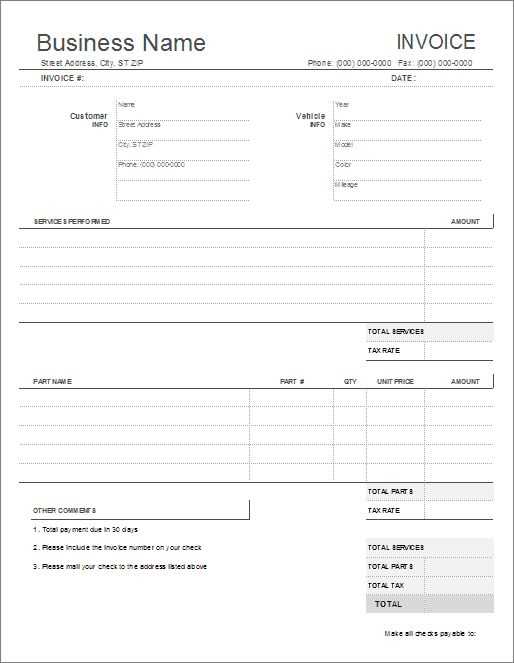
Key Components of a Truck Repair Receipt

A well-structured truck repair receipt provides clarity for both service providers and clients. Ensure that the following elements are included:
- Business Information: Name, address, contact details, and tax identification number.
- Customer Details: Name, phone number, and billing address.
- Vehicle Information: Make, model, year, VIN, and license plate number.
- Service Breakdown: Detailed list of repairs, parts replaced, and labor hours.
- Costs and Fees: Itemized pricing for parts, labor, and additional charges.
- Payment Information: Payment method, total amount, and any deposits or discounts applied.
- Warranty and Terms: Coverage details, return policies, and service guarantees.
- Authorized Signatures: Mechanic’s and customer’s signatures for validation.
Printable and Digital Receipt Options

For paper-based receipts, use pre-printed templates with company branding and duplicate copies. Digital receipts streamline record-keeping and enhance accessibility. Many accounting software solutions generate automated receipts with secure storage and instant delivery to clients.
Customizing a Receipt Template
Adapt the template to meet specific needs:
- Use a clear and readable format.
- Include a unique invoice or receipt number.
- Ensure compliance with tax regulations and industry standards.
- Incorporate a section for additional notes or recommendations.
Optimizing Record-Keeping

Maintain copies of all receipts for tax purposes and dispute resolution. Digital storage solutions reduce clutter and improve accessibility, ensuring records remain organized and secure.
Truck Repair Receipt Template

Include essential details to ensure clarity and accuracy in a truck repair receipt. List the business name, address, contact information, and tax identification number. Specify the customer’s name, contact details, and vehicle information, including make, model, year, and VIN.
Break down services and parts separately. Describe labor performed, including diagnostics, repairs, and maintenance. List each replaced part with quantity, unit price, and total cost. Provide subtotal, applicable taxes, and final amount due.
State the payment method and terms, such as due date and accepted payment options. Include a unique invoice number for tracking. If warranties apply, mention coverage details and expiration dates.
Ensure compliance with local tax and legal requirements. Maintain records for accounting and potential disputes. Use a structured layout to improve readability, and consider digital options for better accessibility and storage.


